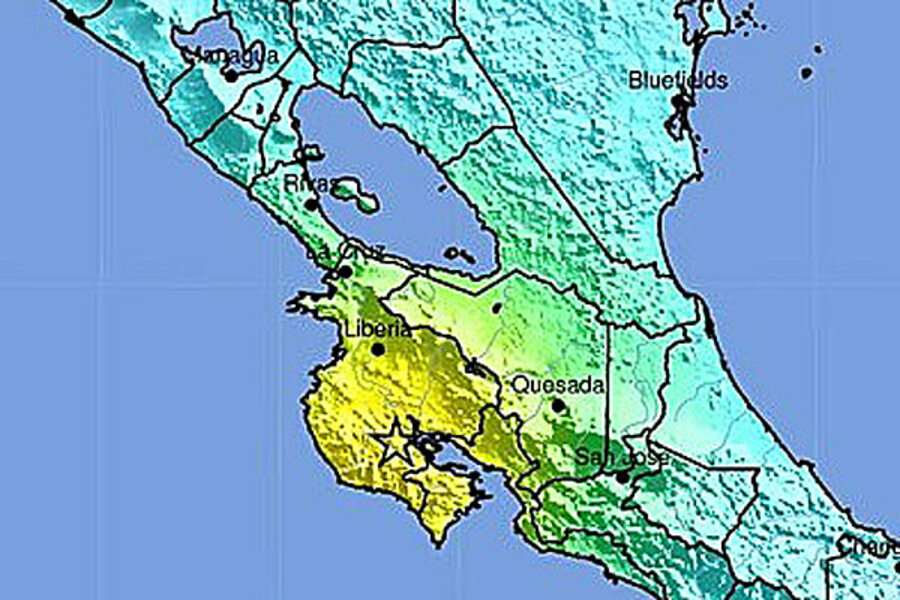Strong 7.6 earthquake shakes Costa Rica, buildings collapsed
Loading...
| Nosara, Costa Rica
A powerful, magnitude-7.6 earthquake shook Costa Rica and a wide swath of Central America on Wednesday, collapsing some houses, blocking highways and causing panic, but officials said there were no reports of deaths.
The USGS said the 8:42 a.m. (10:42 a.m. EDT; 1442 GMT) quake struck about 38 miles (60 kilometers) from the town of Liberia. It was centered about 25 miles (41 kilometers) below the surface. The magnitude initially was estimated at 7.9.
In the town of Hojancha a few miles from the epicenter, city official Kenia Campos said the quake knocked down some houses and landslides blocked several roads.
"So far, we don't have victims," she said. "People were really scared ... We have had moderate quakes but an earthquake (this strong) hadn't happened in more than 50 years."
A preliminary review revealed some structural damage near the epicenter, but no reports of deaths or injuries, said Douglas Salgado, a geographer with Costa Rica's National Commission of Risk Prevention and Emergency Attention. He said a tsunami alert had been called off for Costa Rica.
RECOMMENDED: Japan earthquake and narrow escapes
The review also uncovered a landslide on the main highway that connects the capital of San Jose to the Pacific coast city of Puntarenas, Salgado said. Hotels and other structures suffered cracks in walls and saw items knocked off shelves.
"There's chaos in San Jose because it was a strong earthquake of long duration," Salgado said. "It was pretty strong and caused collective chaos."
Michelle Landwer, owner of the Belvedere Hotel in Samara, north of the epicenter, said she was having breakfast with about 10 people when the earthquake struck.
"The whole building was moving, I couldn't even walk," Landwer said. "Here in my building there was no real damage. Everything was falling, like glasses and everything."
At the Hotel Punta Islita in the Guanacaste area, "everybody is crying a lot and the telephone lines are saturated," said worker Diana Salas, speaking by telephone, but she said was no damage there.
In the coastal town of Nosara, roughly 50 miles (80 kilometers) north of the epicenter, trees shook violently and light posts swayed. Teachers chased primary school students outside as the quake hit. Roads cracked and power lines fell to the ground.
A tsunami warning was in effect for Costa Rica, Panama and Nicaragua, the Pacific Tsunami Warning Center said in a bulletin. It said it was unknown if a tsunami was generated, but the warning was based on the size of the earthquake.
___
Associated Press writers Jack Chang and E. Eduardo Castillo contributed to this report from Mexico City.







